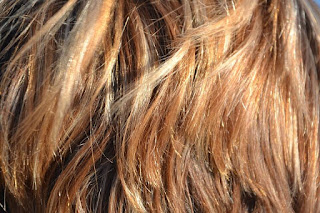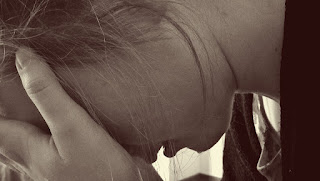Dermatologist and Heavy Hair Fall - Alopecia
Alopecia, which means heavy hair fall, is a symptom that can correspond to many pathologies, a fairly large set of cases.
- Faced with alopecia, the dermatologist asks himself several questions :
- Is it congenital ?
- Is it diffused or localized ?
- And finally is it scarring (regrowth is impossible) or not scarring (phenomenon with a possible regrowth possible)?
- The scalp has an average of 150,000 hairs .
- The hair grows an average of 0.35 mm per day, or 1 cm per month.
Every day between 50 and 80 hairs are physiologically renewed and it is considered that in excess of 100 hairs lost daily the fall is to be considered pathological.
What is non-scarring alopecia?
The main cause among many different causes of hair loss is what is called telogen effluvium.
This is a temporary hair loss, it can be seasonal (in the fall), take place after a delivery or a change of pill in women or after a high fever ...
These hair loss can also be due for example to a thyroid problem, a drug or iron deficiency.
These falls are in principle temporary, unless the triggering cause persists, they require the consultation of a dermatologist. It is indeed a symptom whose origin must be sought. This will require, in some cases, additional examinations.
There is also androgenetic alopecia . It is a reduction of the hair favored by genetic factors , with a risk increase in case of family antecedents .
It can affect both men and women.
In humans , it is localized at the level of the vertex (top of the skull), it can also be manifested by the retreat of the fronto-temporal gulfs , but the disposition of this alopecia is variable according to the individuals and according to the families ...
In women, this androgenetic alopecia can be linked to hormonal factors with excess of male hormones , an ill-adapted pill problem , possibly associated with
- disorders of the rules,
- a hyperseborrhoea,
- of acne,
- or a hyperpilosity.
- A hormonal assessment may be necessary ...
This problem most often has a simple solution (which can sometimes be solved with the simple prescription or change of a suitable contraceptive pill in this case) but it can also much more rarely be a much more serious tumor problem but exceptional.
The other causes of diffuse hair loss are numerous, they can be nutritional, called as a poor diet hair loss problem.
These nutritional deficiencies are rarely compensated by dietary supplements if the people affected have poor food hygiene: the simple rule is to have a balanced diet!
If some people are convinced of the effectiveness of dietary supplements, it is because most diffuse drops improve themselves after 2 to 3 months and this is simply the natural end of the diet. episode of hair loss.
Apart from these diffuse hair falls, there are hair drops in plates.
The most common is the alopecia areata .
It is a non-cicatricial alopecia: there is no disappearance of the hair follicle , except in rare cases, if the process lasts many years.
Some pamels are called "universal", when they do not affect only the hair but the entire hair system.
Alopecia areata is one of the autoimmune diseases that cause hair loss .
Some people tended to associate psychological factors with it, but as in all these diseases that affect the immune system, psychological factors, like other factors that are poorly understood, can be "promoters" of an episode, but it is not the real factors of the disease.
There is a family or personal ground , the pathology appears more at one time than at another, but the psychological factor is not the reason.
On the other hand, having a blight is not without psychological consequences, of course.
The problem of alopecia areata is that it is the pathology of a life , one can be affected a first time to two years, then to adolescence, then to adulthood for example ...
We must therefore consider treatments that can be used in the long term, always weighing the benefits / risks according to the cases, episodes and ages.
The main treatments are:
- the topical corticosteroids ,
- of sessions phototherapy
- sometimes the general steroids over short periods
- of immunosuppressants ( methotrexate ...)
- But hair can also grow back on its own, more or less long-term; this is the case for most of the pelt pampering.
Statistically, when there is severe alopecia areata in childhood, there is a high risk that there will be more severe recurrence in adulthood.
Another case of hair loss in plates: trichotillomania .
It is a disorder characterized by the compulsive pulling of one's own hair and / or hair , resulting in visible alopecia .
The causes are far from simple, and among the offending causes, neuro-biological factors could be taken into account, and not just psychological as previously thought.
The phenomenon is to be differentiated from OCD .
It is a pathology very handicapping. It is often transient in children, however, in a teenager or an adult, we are facing a much more chronic disease, as we know it and approach it for the moment .
Case of alopecia with dandruff
Among the common causes of hair loss in children, the first cause to consider is ringworm .ringworm04M (2)
Indeed certain contagious fungi can make the hair fall in plates, also presenting dander.
Faced with these symptoms, the dermatologist will observe with his dermoscope and a particular light (the plate is it fluorescent?) And will have a sample taken by a laboratory to find out which is the mushroom responsible.
This cause of alopecia is especially present in children because they have little sebum and therefore more risk of contracting fungi.
Scarred alopecia
Traction alopecia :
When one practices daily or occasionally excessive tension of the hair , for example by bun, tight ponytail, blow-drying or often traction images (2)African braids, this alopecia becomes medium-term cicatricial (the hair does not grow again).
Finally other causes of cicatricial alopecia are dermatological diagnosis and will require sampling, specific management: this is the case of lichen planar pilaris, lupus, folliculitis decalvante.What are the treatments for alopecia?
In this sense, once the diagnosis is made, a specific treatment can be implemented.
With regard to androgenic alopecia , the treatment (which will be suspensive and therefore will have to be maintained to keep the benefit).
There are two effective treatments: minoxidil and finasteride.
Minoxidil is a topical treatment that can be prescribed to both men and women. Today is the only treatment that actually makes hair regrow. The dosage should be adapted in women: applied excessively it can in some cases cause hyperpilosity (temporary) on the face.
Finasteride is a tablet form of treatment reserved for men..He is often wrongly criticized and there are many rumors circulating on the web about his side effects :
- low libido and erectile dysfunction, and if this fact exists and has been verified in many studies, it affects only 2% of patients, and when this is the case, stopping treatment is enough to remove the troubles.
This bad publicity is favored by class action suits of American lawyers: they bring together a number of people with the same symptoms to sue dermatologists or laboratories.
Apart from these two treatments, and hormonal management in women, the other products on the market do not show real effectiveness in androgenetic alopecia.
Other solutions: transplants ( in men and women )
They are the responsibility of specialist dermatologists
It must be done at the right time, hence the importance of a diagnosis and prognosis made by the dermatologist.
This is a new distribution of hair, we remove hair where there is, to put where there is none.
We take the hair in the area called "donor" strips or small groups (follicular units) to replant in small groups or single unit in so-called "recipient" area. The hair remains at the level of the graft as they would have persisted where they came from.
Implants on scars (burns, trauma, ...) are also possible.
Sudden extreme hair loss is a symptom, we must look for the origin, hence the importance of consulting a dermatologist who has a key role in the establishment of a diagnosis.
It is necessary to ask oneself systematically if it is a banal and seasonal phenomenon or if there are other causes of sudden extreme hair loss (diseases, side effects of drugs, toxic).
The examination of the hair and the scalp bring signs which can sometimes avoid to have recourse to many complementary examinations.
To note the dermoscopy (generally known for its utility in the early detection of skin cancers) is a technique that has made it possible to progress enormously in the diagnosis of alopecia.





Comments
Post a Comment